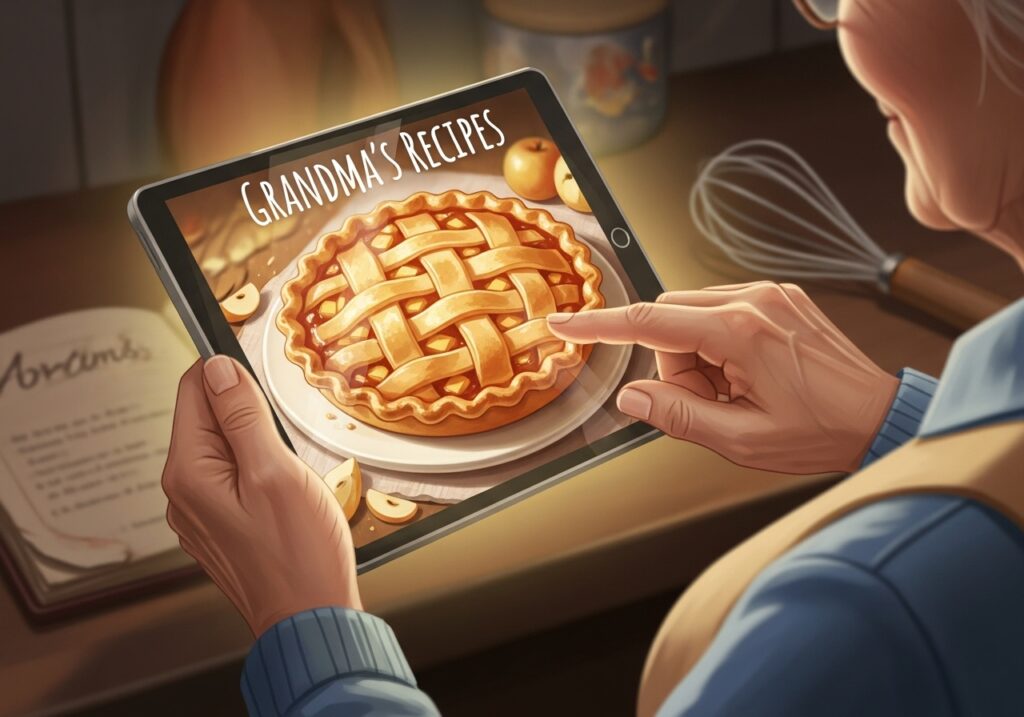Digital Comfort: Why We Crave Grandmas Recipes

In today’s fast-paced digital world, it’s surprising that grandmas recipes continue to hold a special place in our hearts. These traditional dishes evoke a sense of nostalgia and comfort, reminding us of home-cooked meals and warm memories. Edit Full screen View original Delete Comfort Food in the Digital Age: Why We Still Crave Grandma’s Recipes The digital age has made it easier to access a wide variety of recipes, yet we still find ourselves drawn to the familiar flavors and techniques passed down through generations. There’s something unique about recreating nostalgic food recipes that connects us to our past and to the people who matter most. Key Takeaways The significance of grandma’s recipes in modern times How nostalgic food recipes evoke emotions and memories The role of digital platforms in preserving traditional cooking methods The comfort found in familiar, home-cooked meals The connection between food, nostalgia, and family heritage The Enduring Appeal of Comfort Food Comfort food is more than just a meal; it’s an emotional connection to our past, our culture, and our family traditions. In American culture, comfort food plays a significant role, often evoking feelings of warmth and nostalgia. The reasons behind its enduring appeal are multifaceted, involving both cultural and emotional factors. What Defines “Comfort Food” in American Culture Comfort food in America is characterized by hearty, home-cooked meals that are often associated with childhood memories. Dishes like macaroni and cheese, mashed potatoes, and fried chicken are staples of American comfort food. These traditional comfort foods are not just satisfying; they also provide a sense of security and comfort. Edit Full screen View original Delete traditional comfort food The Emotional Connection to Traditional Recipes The emotional connection to traditional recipes is a significant factor in the enduring appeal of comfort food. Recipes passed down through generations serve as a tangible link to our heritage and family history. Cooking and consuming these dishes can evoke powerful emotional responses, often tied to memories of family gatherings and special occasions. Regional Variations of American Comfort Food American comfort food is not monolithic; it varies significantly from region to region. For example, the Southern United States is known for its rich, comforting dishes like gumbo and biscuits and gravy, while the Northeast might favor clam chowder and baked beans. These regional variations reflect the diverse cultural influences that shape American cuisine. Understanding these regional differences is crucial to appreciating the broad appeal of comfort food across the United States. As we continue to navigate the complexities of modern life, the comfort found in these traditional dishes remains a constant, comforting presence. The Psychology Behind Our Comfort Food Cravings The psychological underpinnings of comfort food cravings reveal a fascinating interplay between food, memory, and emotional security. Our brains are wired to associate certain foods with feelings of comfort and safety, often rooted in childhood experiences. Food, Memory, and Emotional Well-being Comfort foods are typically those that were prevalent during our formative years, evoking memories of family, love, and security. The consumption of these foods triggers a nostalgic response, releasing neurotransmitters like dopamine, which enhances our mood and provides a sense of well-being. Edit Full screen View original Delete […]